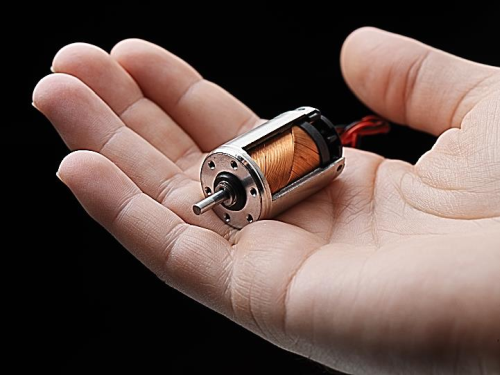
During the selection of a miniature DC motor, the design engineer will consider the dimensions needed to fit the desired space as well as the working point (the torque and speed at which the motor is required to operate). There will also often be a choice of coils. Valentin Raschke, application engineer at Portescap, examines how choice of coil impacts on the motor specification, making it possible to adapt the motor to the available power source to create the most efficient solution for a given application.
Regardless of its construction, a DC motor is performing the same job – converting electrical energy into mechanical energy. For any given application, there might be a whole range of motors available that could do the job, with the designer making the eventual selection based on parameters such as size, weight, efficiency, torque and speed requirements, lifespan and cost.

Taking those factors into consideration might lead the designer to a single, best choice of motor. But there might also be the opportunity to tweak motor design – and therefore boost efficiency – by selection of the most appropriate coil.
So how does the coil impact on our design considerations? The torque produced by the motor will be determined by the current consumed and the torque constant. The torque constant, in turn, is defined by the radius of the coil, the magnetic flux density, the length of the motor and the number of turns of the coil. The first three of these parameters are fixed by the chosen motor and its diameter. Adjusting the number of turns of the coil, though, can impact the torque constant for a given size of motor.
This is important because the no-load speed of the motor is defined by the available supply voltage and the torque constant of the coil. We might find a choice of several coils that meet our needs, but with different supply voltages and different current requirements. The coil is therefore chosen to adapt the motor to the available power supply.
Choice of coil also impacts on the motor efficiency in the application. Look, for example, at ironless DC motors: these are renowned for their high efficiency. Aside from friction, losses tend to be heat generated by the current running through the copper wire of the coil. These losses are proportional to the coil resistance multiplied by the square of the current. Motor efficiency is higher at lower torque due to the lower motor current, so here again choice of coil can have a big impact.
Consider an application requiring continuous operation at a fixed speed and torque – perhaps a medical infusion pump – then we might find a number of coils in the motor manufacturer’s catalogue that would seem to meet our needs at the required working point and power. If the available power supply for our application is a voltage source, supplying a fixed voltage, that will narrow down the choice of coils further and the designer can select the one that is the best fit to optimise the application. With a voltage source, it is typical for a reduced number of options of coils and there may only be one option for a given application.
The number of options tends to be greater if a current source – a given maximum current across a range of supply voltages – is available instead of a voltage source to achieve the same working point. Now we might have a higher number of possible coils to meet the application requirement and the design engineer can really begin to tailor the application.
If total efficiency is the prime consideration, that might lead us in one direction. In other applications, the coil with the lowest current consumption might provide the best choice, as it will result in a longer lifetime of the commutation system and increase the number of cycles with a single battery charge for battery powered applications.
The availability of a number of standard coils can take us a long way towards tailoring the motor to the application, but there may be instances where the design engineer needs something even more optimised. In a critical application where cost pressures are less of a consideration than ultimate performance and where the design engineer does not have the freedom to adapt the power supply for a standard coil, then a custom designed coil could provide the best solution.

© Technews Publishing (Pty) Ltd | All Rights Reserved